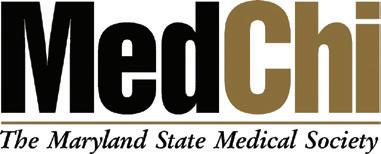
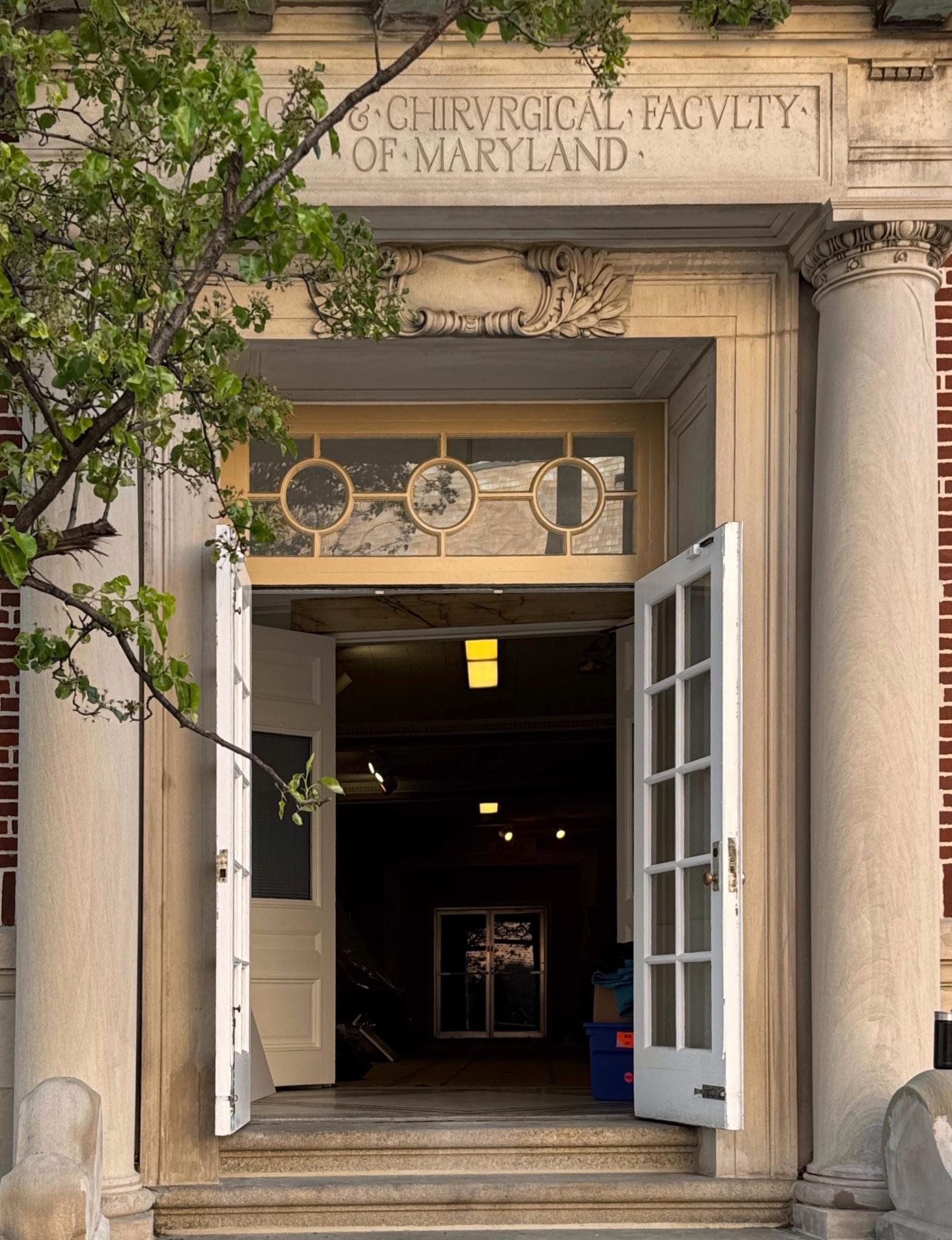
CELEBRATING 225 YEARS OF COMMITMENT TO MARYLAND PHYSICIANS



CELEBRATING 225 YEARS OF COMMITMENT TO MARYLAND PHYSICIANS
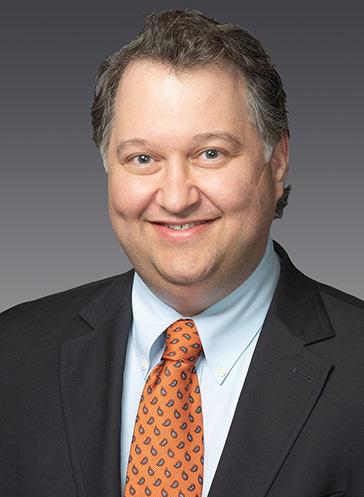
While I cannot say the year went quickly, it is difficult to believe that my year as President of MedChi is coming to a close. The work that goes in to promoting and protecting physicians, patients, and the public health never ends, but this is a natural time to look back at the past year.
The most concentrated activity certainly was during the session of the Maryland General Assembly. As in most years, we had our set of wins and challenges, but the 2024 session was certainly a success. We succeeded in passing new limits on restrictive covenants to protect physicians working as employees, a priority only established by the House of Delegates last fall! In addition, we saw multi-year efforts for both “PA” issues (prior authorization and physician assistant) culminate in passed legislation. While we may not have gotten everything desired, each bill included key provisions to establish MedChi priorities into law. We managed to avoid any erosion to the current standards for medical malpractice, and scope of practice

It is a profound honor and a privilege to serve as the incoming president of MedChi. Throughout my journey thus far with MedChi, I have grown immensely working alongside inspiring leaders whose support and collaboration have provided me with invaluable insights and experiences that have shaped my professional development.
Artificial Intelligence (AI) is changing our lives in countless ways. From powering virtual assistants like Siri to self-driving cars and chatbots for customer service, AI enhances our lives making tasks easier and more efficient.
I am particularly passionate about the integration of AI in health care. AI holds immense potential to enhance patient care, streamline operations, and drive innovative solutions. However, these advancements come with challenges such as
expansion efforts for non-physicians were largely controlled. We always worry there may be storm clouds forming, but we remain well positioned to advocate for what serves Maryland physicians and patients best.
MedChi dedicated a significant amount of time and energy this year to the evolving changes to the Total Cost of Care Model, aka “the waiver.” CMS’s AHEAD model is now inviting other states to participate along with Maryland in a modified system based off the Maryland experience. A dedicated and passionate group of MedChi members developed consensus statements/requests on several topics impacted by the waiver. These policy papers have been presented and reinforced by MedChi leadership to multiple stakeholders in the process, including our federal delegation, state regulators, and CMS. We will continue to push these policies and ensure we see follow-through.
The year has demonstrated how MedChi works best. We have seen our House of Delegates come together with a recommendation for a complex topic, and then lead the effort to successfully get a bill signed by the Governor. We have seen impassioned individuals come together to speak with a unified voice to make sure we are heard. I’m truly proud and humbled by what we accomplished this year, and I cannot wait to continue the efforts!
— Ben Lowentritt, MD MedChi President, 2024
ensuring data privacy and security, managing the digital divide among patients, addressing the potential to depersonalize patient care, and dealing with the variability of resources and awareness among physicians. AI technology is rapidly evolving, yet health care-related AI policies are lagging, creating challenges in ensuring its safe and effective implementation.
Health care policy is largely managed at the state level, leading to significant variations in how health care services are regulated and delivered. Thus, it is crucial to collaborate with state legislators to develop AI policies that protect patients and physicians. In addition to learning about emerging technologies, the MedChi community must be actively involved in their design, implementation, and policy-making.
My goal is to ensure that MedChi is at the forefront of AI advancements in health care. I am committed to initiating discussions and fostering understanding about AI’s role in health care. I intend to collaborate on the development of statelevel policies to ensure these advancements benefit patients and physicians. Together, we can lead the charge in transforming health care through the power of AI.
—
Padmini Ranasinghe, MD
MedChi
President, 2025
“In the Words of Faculty President Upton Scott,” as recounted by Bruce Smoller, MD
My name is Upton Scott. I was born, one of eight children, in County Antrim, Ireland, in 1722. I died in 1814, at the age of 92. I am a physician, a landowner, and I was the first president of the Medical and Chirurgical Faculty of the State of Maryland. My death in 1814 has not stopped my ability to follow the fortunes of the Faculty, as MedChi was originally known, and it is this that I wish to apprise you of today. Its path through history is replete with notable people, policies and the occasional pothole. It is a story worth noting and repeating.
I, myself, received my medical degree in 1753. I came to Maryland with Horatio Sharpe, the new governor of the province of Maryland as his personal physician. When the Revolutionary War broke out in 1776, I went to Belfast and London but returned to Maryland to practice medicine. As an aside, Francis Scott Key, he of the famous “Star Spangled Banner,” took the name Scott as a tribute (here I blush) to me, whose wife was his beloved great aunt. We shall return to my great nephew anon.
In 1799, 101 physicians practicing from all the counties of Maryland, including William Beanes, MD, converged on Annapolis to form the society of which you, dear reader, are a member and professional descendent. We will weave a tale involving Dr. Beanes and my great-nephew in a bit, gentle reader, but your Society had its origins in a campaign, begun eight years earlier, to set standards of practice and education among the physicians ministering to the communities of Maryland. They received a charter of incorporation from the Maryland Legislature finally in 1799 and the rest is, well, history. The wording of the charter, “to prevent the citizens (of Maryland) from risking their lives in the hands of ignorant practitioners or pretenders to the healing art,” established the mission of the Society and made it the seventh of its kind in the country.
American member, belatedly, was offered membership in 1882. William Welch, MD, president in 1891-92, was the first dean of the Johns Hopkins School of Medicine and then, of course, came William Osler, MD, perhaps the most important physician of his time.
But first, I promised I would tell you a story involving one of our founders, Dr. William Beanes, and my great nephew, Francis Scott Key. It can be argued, and I think justifiably so, that absent the presence of Dr. Beanes, America would be without its often beloved, sometimes maligned national anthem.

William Beanes was a wealthy physician living in Upper Marlboro. He was involved, with two other physicians, in detaining some British Army deserters who had looted the town on the way back from burning Washington. Retrieved by the British General Ross, Dr. Beanes and two other physicians were forcibly detained also. The other two physicians were released but Beanes was arrested as a spy. He was brought to a British prison ship in the Potomac River and then taken up the Chesapeake to Baltimore. A campaign was quickly mounted to free the now elderly physician, and my nephew, Francis Scott Key, now a well-known lawyer practicing in Georgetown and Frederick, was hired to negotiate his release.
Throughout its life, the Faculty and then Society, which you have inherited, has been a part of Maryland history. It was involved in 1807 in the creation of what became the University of Maryland School of Medicine. In 1830, we established a medical library in Baltimore and, in 1839, we were instrumental in the creation of the Baltimore College of Dental Surgery, the first institution of its kind in the world. Richard Sprigg Steuart, MD, was a founder of Spring Grove Hospital. Its first African
Scott Key boarded the British ship on September 13, 1814 (I had, sadly, already died in February of that year), and successfully secured the release of Dr. Beanes. However, the British refused to let them leave until the bombardment of Fort McHenry was completed. Dr. Beanes and Key stayed the night on the ship and watched the heavy bombardment of Fort McHenry. In the morning, when the rockets’ red glare had faded and the bombs bursting in air had ceased, the tattered American flag still flew, and the rest is, as they say, history. The poem “The Defence of Fort M’Henry,” penned by Key, was later set to the tune of a British drinking song, entitled “To Anacreon in Heaven,” and became the “Star-Spangled Banner” you know today. But for the arrest and detention of a founder of MedChi, we would be without a part of our national heritage.

Meg Fairfax Fielding
For decades, MedChi’s rare book collection was hidden among the stacks on the top floor of the MedChi building. With the help of MedChi History Intern Jack Elsby, MedChi’s rare book collection has been brought to the Rare Book Room on the first floor and can be viewed by appointment.
During the collection’s relocation, rare leather-bound books were brought out, dusted off, catalogued, and thoroughly researched. Rust-stained books were preserved and relocated to a climatecontrolled area, and many more rare books were uncovered and preserved in the process.
MedChi’s rare book collection includes a variety of books published throughout history, including Henri Stephanus’ book Medical Arts, Principles of the Past (1567) (illustration pictured bottom), the intriguing set of fifty French dictionaries (Dictionnaires des Sciences Medicales,1813–22); the illuminating illustrations of the Pictorial Atlas of Syphilitic Skin Diseases, by John James Pringle (1876); and Paolo Mascagni’s Vasorum lymphaticorum corporis humani historia et ichnographia (illustration pictured top).
Illustrated works are especially rare and unique, as each illustration was
Editorial Offices: MedChi, The Maryland State Medical Society; 1211 Cathedral Street, Baltimore, MD 21201; 410.878.9897
Advisory Board: Bruce M. Smoller, MD (Chair); Stephen J. Rockower, MD (Vice Chair); Gene Ransom, III, Esq (CEO, MedChi); Susan G. D’Antoni (MedChi Director of Publications); Susanna M. Carey (Production Editor)
Managing Editor: Victoria Hecht, 410.878.9897; vhecht@medchi.org
Advertising: Victoria Hecht, 410.878.9897; vhecht@medchi.org
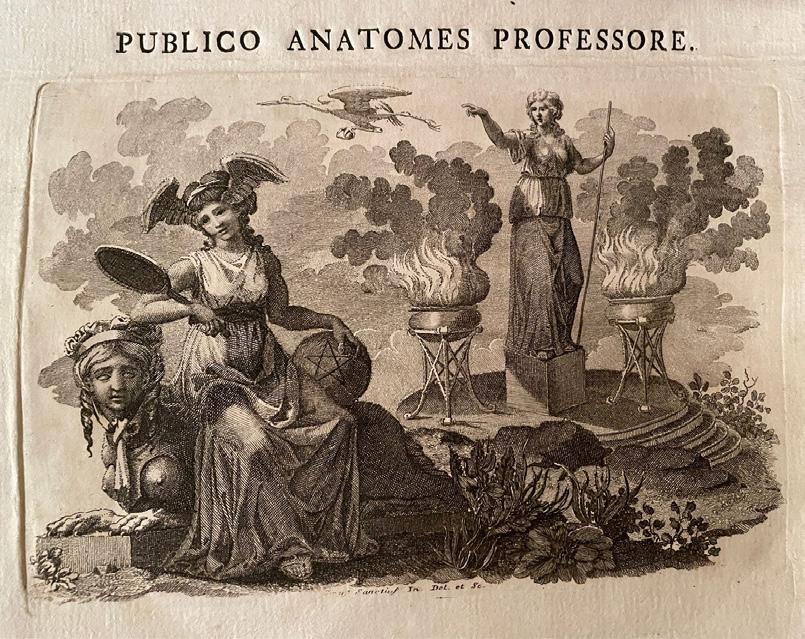

All opinions and statements of supposed fact expressed by authors are their own, and not necessarily those of Maryland Medicine or MedChi. The Advisory Board reserves the right to edit all contributions, as well as to reject any material or advertisements submitted.
Copyright © 2024. Maryland Medicine, The Maryland Medical Journal. USPS 332080. ISSN 1538-2656 is published by the Medical and Chirurgical Faculty of Maryland, 1211 Cathedral Street, Baltimore, Maryland 21201, and is a membership benefit.
originally engraved onto copper or hardwood. Many book illustrations are also carved in reverse, since engravings produced a reverse print. In some instances the plates are individually hand-tinted; in others, the books have marbled edges to resemble the coloration pattern of marble stone.
Many of the collection’s original owners play a crucial role in MedChi’s history. Contained within the collection are books from the collection of MedChi’s first President, Upton Scott, MD. Scott became President in 1799, and the books represent his personal accounts at medical school in Dublin, circa 1750. The collection also showcases books from John Archer, MD, who, in 1765, was the first person to receive a medical degree in America. Principals and Practice of Medicine, written by MedChi’s Sir William Osler, MD, Johns Hopkins’ first Chief of Medicine, can also be found in the collection. These are just a few examples of the many physicians whose legacy lives on in MedChi’s print archives.
To view the collection, contact events@medchi.org
Meg Fairfax Fielding is the Director of the History of Maryland Medicine. Her email is mfielding@medchi.org.
All rights reserved. No portion of this journal may be reproduced, by any process or technique, without the express written consent of the publisher. Advertising in Maryland Medicine does not imply approval or endorsement by MedChi unless expressly stated.
DISCLAIMER: Some articles may contain information regarding general principles of law. They are not intended as legal advice and cannot be substituted for such. For advice regarding a specific legal situation, consult an attorney licensed in the applicable jurisdiction and with appropriate training and/or experience in the legal area in question.



From Upton Scott to Padmini Ranasinghe, MedChi’s presidents have striven to uphold the mission of serving as “Maryland’s foremost advocate and resource for physicians, their patients, and the public health.” We asked some recent presidents to sum up their tenure. Here are their responses:
Thomas Allen, MD (1997)
A major issue the medical society faced during my time was the effect that Managed Care Organizations (MCOs) had on specialties. Many physicians were forced to join managed care panels to receive payment. MedChi responded by creating a Managed Care Contracts Handbook to help physicians review and assess the contracts that they were being asked to sign.
Albert Blumberg, MD (2000)
Highlights — the annual meeting in Ocean City, visiting the surrounding states during their society’s annual meetings, attending the June AMA meeting, and being part of the AMA Southeast delegation. Lowlights — being sued (with MedChi) for getting involved in a contract dispute between members of a cardiology group in Hagerstown.
Catherine Smoot-Haselnus, MD (2002)
As MedChi’s first female President, I remember three major issues. First: Expanded scope of practice for nurses was a hot button. Maryland nurses were looking for expanded scope of practice without physician input and this caused concern for patient safety among MedChi members. Second: BPQA legislation was to sunset in 2003. We introduced legislation to transfer BPQA responsibilities to the Secretary of Health. Third: Tort reform. MedChi pushed to cap pain and suffering damage awards at $350,000 (down from $695,000). In house, I pushed for organizational efficiency by consolidating committees and reducing the frequency of meetings.
Mark Siegel, MD (2003)
During my presidency, Montgomery County Medical Society (MCMS) and MedChi organized a rally where more than 2000 physicians boarded buses (in the cold) to Annapolis. After speaking with legislators and the governor, we were able to get legislation passed to put a cap on pain and suffering damages.
Willarda Edwards, MD (2004)
I had the honor of being the first African American and second female President of MedChi in 2004–05, making my presidency both historic and timely. During my tenure, I advocated for our profession by addressing the lack of sufficient OB/GYN services amidst soaring malpractice insurance costs and tackling health disparities as organized medicine sought to implement the recommendations from the Institute of Medicine’s 2002 report, “Unequal Treatment.”
In 2004, Maryland faced significant healthcare challenges related to medical malpractice insurance and access to care. Rates were rising significantly, and insurers were leaving the market. Governor Robert Ehrlich convened a special legislative session in December, resulting in the passage of the Maryland Patients’ Access to Quality Health Care Act of 2004. The law established a “People’s Insurance Subsidy Fund” to temporarily subsidize doctors facing rising malpractice costs, funded by a 2 percent tax on HMO premiums. While no major health care access reforms were enacted in 2004, discussions around expanding access to care in underserved areas were ongoing and would pave the way for more significant actions in subsequent years.
Bruce Smoller, MD (2007)
It turned out to be a tumultuous and often contentious year. Because of the need to deal with administrative and personnel issues which took so much time and energy and left precious little energy for much else.
Murray Kalish, MD (2009)
I set up the Business of Practicing Medicine course with the University of Maryland Robert H. Smith School of Business. I also introduced the now-annual MedChi Members’ Social Baseball Game at Camden Yards. During my tenure the Assignment of Benefits and Reimbursement of Non-preferred Providers Bill was passed.
Tyler Cymet, DO (2014)
I set up a project to better understand the future of health care in Maryland. This project brought professionals together to discuss where health care was and where we wanted it to be. The Future of Maryland MedicineMedicine project spawned an Intra-Professional Council where a variety of providers (optometrists, podiatrists, nurses, naturopathic providers, chiropractors, physical therapists, even veterinarians) could convene.
Stephen Rockower, MD (2016)
My year focused on legislative issues. Tort reform, “scope creep”, and insurance issues were at the forefront. One hidden annoyance to physicians was the 2.5 to 4.5 percent fees imposed by insurance companies on remote credit card payments. I worked with Delegate Ariana Kelly to pass a bill prohibiting such virtual payments unless the physician agreed.
continued on page 13
Next generation therapeutics
Advancements in biotechnology have expanded our toolkit of drug modalities. This provides an opportunity to design therapeutics for disease mechanisms previously considered difficult, if not impossible, to target and enables our scientists to pioneer new approaches to drug discovery.

Meg Fairfax Fielding
As with any organization of our longevity, or even less, there are good and bad leaders, and leaders who made no impression at all.
In our 225th year, we thought we’d highlight a few of them. Until 1848, presidents did not have a set term, but after 1848, it was a three-year term, serving as Incoming President, President, and then Immediate Past President — a system still in place today.
Of course, our most well-known President was Sir William Osler, MD, one of the “Big Four” at Johns Hopkins, their first Chief of Medicine, a noted book lover, and, finally, Regius Professor at Oxford University in England. Osler lived in Baltimore, Maryland, for sixteen years, the longest he lived anywhere.
Our first President was Upton Scott, MD, who was the physician to the last royal governor of Maryland. An Irishman, he didn’t believe in the American Revolution, so he moved back to Ireland for the duration of the war. His enduring claim to fame is that he is the uncle of Francis Scott Key, who wrote the National Anthem!
During the Civil War, the Faculty, as it was then known, went dormant. No meetings, no elections, nothing. So, the office of the President was occupied by George C.M. Roberts, MD, from 1859 until 1870. And then during 1870, two others, John R.W. Dunbar, MD, and Nathan Ryno Smith, MD, became Presidents. Roberts and Dunbar both died during 1870, so it was the only time we had three Presidents in one year.
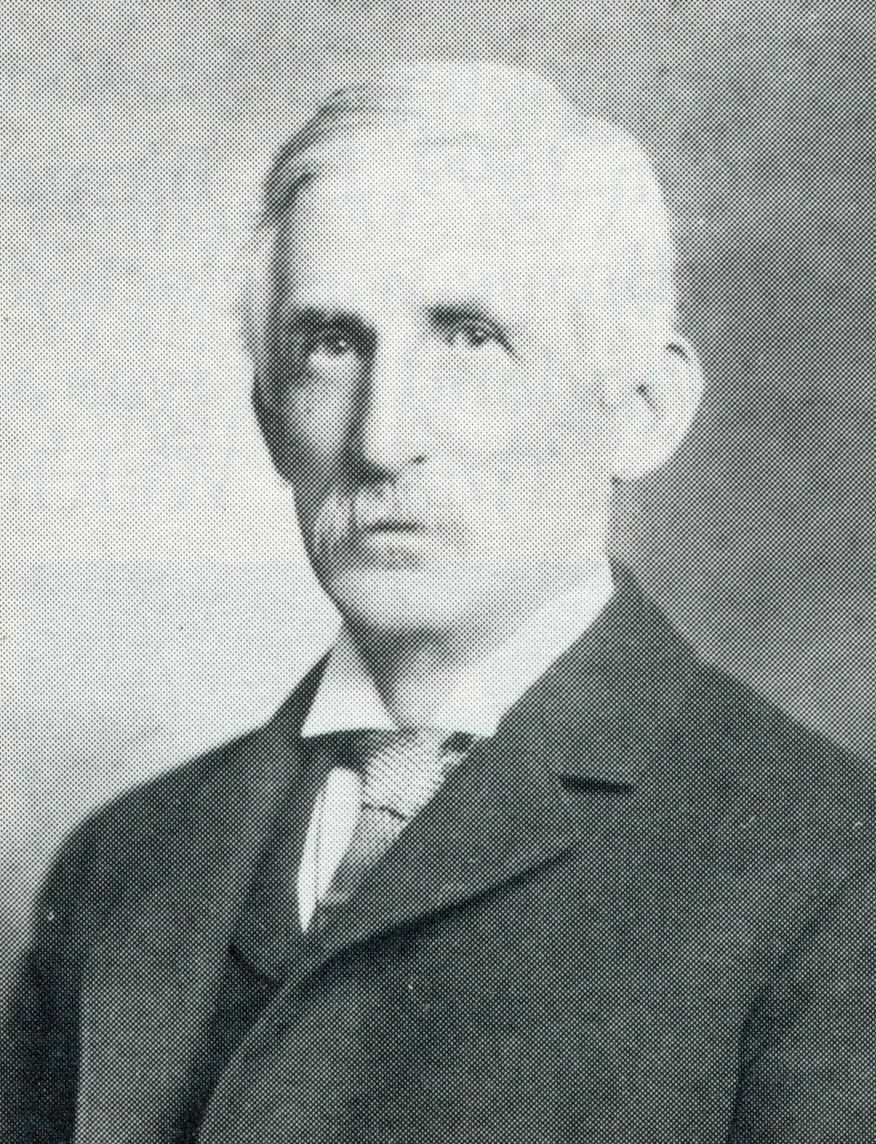
Eugene Fauntleroy Cordell, MD (pictured below left), who was President from 1903 to 1904, filled several other roles before he assumed this role. He was the Faculty’s librarian on and off for ten years, all while he was writing his magnum opus, The Medical Annals of Maryland: 1799 to 1899. This is an astonishing feat, considering he researched every single physician who practiced in Maryland during that period, and wrote detailed biographies of them.
In more contemporary times, Roland Smoot, MD (pictured below middle), was the first Black physician to be elected as President. He was well known in Baltimore for his work as Assistant Dean of Student Affairs at Johns Hopkins, recruiting Black students to the Medical School. He also served as Chief of Medicine at Provident Hospital in Baltimore and was on staff at the University [of Maryland] Hospital, as it was then called.
Catherine Smoot-Haselnus, MD (pictured below right; no relation to Roland Smoot), was the first woman elected President of MedChi. An ophthalmologist on the lower Eastern Shore, Smoot-Haselnus also served as President of MSEPS (the Maryland Society of Eye Physicians and Surgeons), and as a fellow of the American Academy of Ophthalmology, and delegate to the American Medical Association.
As a personal point, we’d like to elect Peregrine Wroth, MD, and Clotworthy Birnie, MD, as having two of the best names of all our Presidents. More info may be found on the Archives Blog Meg Fairfax Fielding is the Director of the History of Maryland Medicine. She can be reached at mfielding@medchi.org
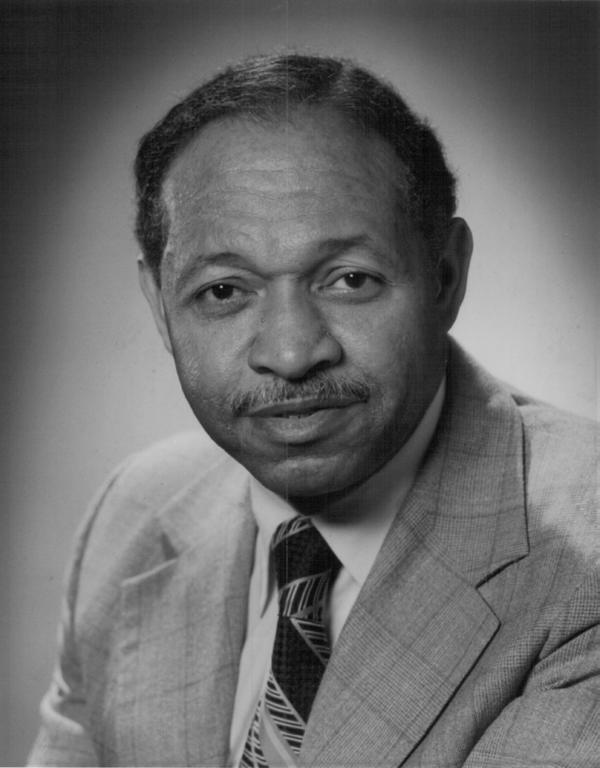
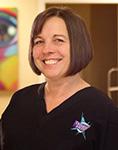

Getting the right pieces in place is the foundation of every strong defense. At M EDICAL M UTUAL , our aggressive and unyielding approach to defending good medicine has made us the leading professional liability insurer in Maryland. Our dedicated claims management team utilizes only the top defense attorneys in the state. When we’re defending your practice and professional reputation, our strategy is simple: we don’t back down.
Aggressive claims defense is one of the many benefits of being a M EDICAL M UTUAL Insured. Our Doctors also enjoy:
Exclusive access to the best defense attorneys in Maryland
The Mutual Advantage Plan financial reward program
MedGuard administrative defense coverage and e-data RESPONSE data breach response coverage
Comprehensive risk management education programs that earn CME and premium credits
A large collection of online resources
Superior service from experienced, local Insurance Producers (Agents) AGGRESSIVE CLAIMS DEFENSE

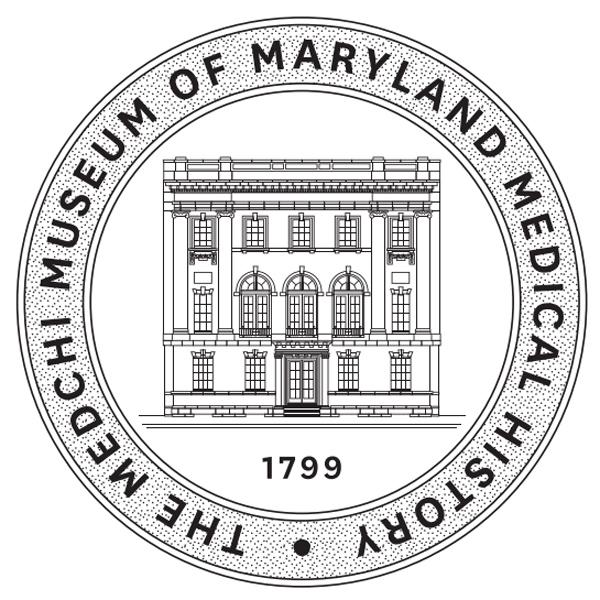
This issue of Maryland Medicine proudly celebrates MedChi’s 225 year anniversary and honors the significance of our past while looking ahead to what’s in store for the future of organized medicine.
Fittingly, “Leeches to Lasers: 225 Years of Service” was the Annual Thomas E. Hunt, Jr., MD History of Maryland Medicine Lecture, which took place on Tuesday, October 22, in Osler Hall. MedChi President Benjamin H. Lowentritt, MD, led the lecture and shared many slides from the organization’s extensive archives.
The MedChi Museum is pleased to showcase its newest acquisition, Dictionnaires des Sciences Medicales, a set of fifty French dictionaries published between 1813 and 1822. The books are rich with illustrations and engravings, allowing readers to envision French medicine and its applications during the 1800s.
A look back would not be complete without mention of MedChi’s first librarian: Marcia Crocker Noyes. Legend has it that the MedChi building is haunted by Miss Noyes — affectionately called “Marcia” — who worked with the society for fifty years until she died in 1946. Noyes lived in an apartment on the building’s top floor, and many claim her specter continues to roam the halls. Even today, staff members claim to feel her presence, as paintings are moved, and music is inexplicably turned off; some have even noticed that “lost items” are mysteriously replaced. For those in doubt, you can join a MedChi-led Ghost Tour in its historic 1909 offices, to be held during Halloween week from 6:30 to 7:30 p.m. Details may be found on MedChi’s Archives blog.
Did you know that the MedChi’s Archives Blog has been active for more than ten years? It continues to delight readers with daily discoveries, historic anecdotes, and upcoming events and is maintained by resident Historian Meg Fairfax-Fielding. In keeping with the times, access to its archives has been expanded to include Instagram and YouTube Channels, which will now feature video content.
To read the MedChi Archives Blog, visit the following link: https://medchiarchives.blogspot.com/?m=1.
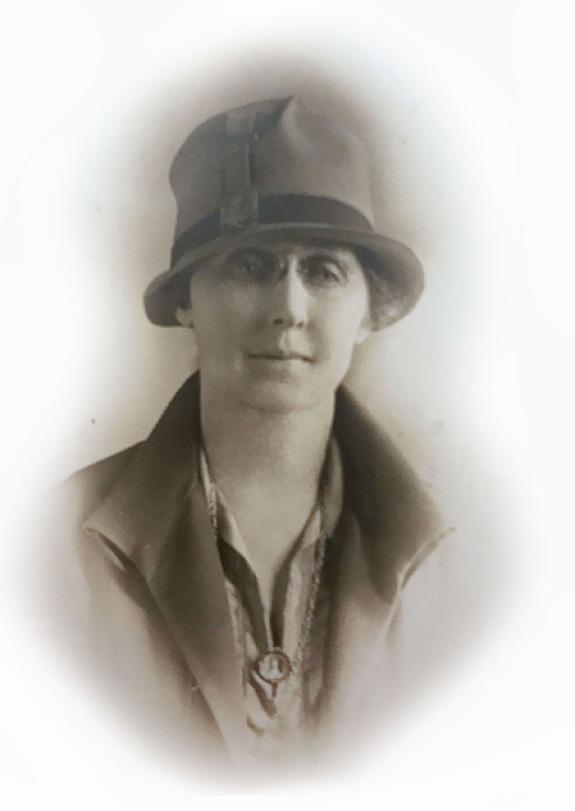
“In making a living, I made a life.” These are the immortal words of Marcia Crocker Noyes, resident librarian at MedChi for fifty years.
Noyes was born in Saratoga, New York, around 1869. She attended Hunter College in New York City, and then came to Baltimore in the mid-1890s to visit her sister, Kitty, whose husband was unwell. She never left Baltimore.
Noyes and her sister worked at the Enoch Pratt Free Library in Baltimore, where they cataloged books.
In 1896, when William Osler, MD, became President of the Medical & Chirurgical Faculty (known as The Faculty), he was dismayed by the condition of the library and sought out a librarian who could work and live on the premises. Dr. Osler contacted his friend, Bernard Steiner, the President of the Pratt Library, and Marcia Crocker Noyes was hired two weeks later.
Initially the Faculty’s members saw Noyes as a young woman who knew nothing about medicine. She quickly proved them wrong. Osler and Noyes worked together to foster conversations between younger and older physicians. She even subscribed to numerous medical journals, so that members could read and discuss them. This was one of Noyes’ many initiatives that made the library what it is today.
J. Albert Chatard, MD, a student of William Osler and library advisor, said, “[Noyes] created a reality of the hopes and dreams Dr. Osler formulated while he was at Hopkins.” She wished for others to share her admiration and devotion to the building and organization and put every effort into doing so.
In 1903, the American Medical Association required their state branches to have an “Executive Secretary” leading the organization, and Noyes was appointed to the position as the library director. In 1904, the library was reorganized, and Noyes assumed the role of secretary; she would not be formally appointed to the position of Executive Secretary until 1925.
continued on page 18


A Society’s Journey, continued from pg. 3
Our Society continued to grow and to gain the respect of legislators and state administrators. During the Civil War, meetings were suspended as many physicians joined the Union and Confederate armies. Subsequent wars saw the same pattern as physicians left for military service. Our medical society has persevered through wars and other calamities and emerged stronger.
As I look at our history, there are many notable dates that stand out. Perhaps the most notable, however, was 1889, when Dr. William Osler arrived. The most famous physician at the time, and, some say, the most influential and significant physician of the 20th century, the father of modern medicine, Dr. Osler, who needs no introduction to members of our Society, was president of MedChi from 1896–97. The first Physician in Chief of Johns Hopkins, he was responsible, along with William Welch, MD, Howard Kelly, MD, and William Halstead, MD, and later Harvey Cushing, MD, for the establishment of the Johns Hopkins medical program, introduced the concept of interns and residents and many of the tenets of modern medical education that you, my colleagues, are familiar with today.
Osler convinced the Society to establish a fine medical library at Eutaw Street, which outgrew its confines and necessitated, in 1909, the building of a new headquarters for the Society and its library, a building at 1211 Cathedral Street, which you still occupy today. It also included a roof-top apartment and a garden for a full-time, live-in librarian, Marcia Crocker Noyes, whose ghost roams its halls. By the way, I know her well and our spirits, if I may be so bold, roam together from time to time. But don’t tell a soul!
Being President of MedChi, continued from pg. 7
Gary Pushkin, MD (2017)
We were just beginning to understand the opioid epidemic so that’s where I put my efforts. I set up an opioid task force. Some of our early accomplishments were getting electronic health records away from pre-populated narcotics prescriptions. Early efforts were also directed to developing guidelines on opioid-prescribing. The task force became part of Maryland’s Opioid Operational Command Center (OOCC). We worked on legislation to support the prevention, treatment, and enforcement efforts combating the heroin and opioid crisis. The Opioid Task Force eventually became a standing MedChi committee.
Dr. Osler’s opus The Principles and Practice of Medicine influenced the founding of the Rockefeller Institute of Medical Research. In 1904, Dr. Osler accepted British Prime Minister Balfour’s offer to become Regius Professor of Medicine at Oxford, and moved to England, where he died in 1919, two years after his son Revere died grievously wounded in the first World War.
Osler was an inspiring physician, innovator, teacher, and MedChi leader. He considered his life’s greatest accomplishment, however, to be, the teaching of future physicians, writing near his death that “I desire no other epitaph than the statement that I taught medical students in the wards, as I regard this as by far the most useful and important work I have been called upon to do.” This is a legacy of MedChi, my fellow physicians, of which you should be justly proud.
The Medical Society of which I was the first President, consisting of 101 members, and formed to professionalize the practice of medicine in Maryland, has grown to many thousands of physicians and exerts a profound influence on the practice of medicine through its efforts and those of its component societies. It has accomplished many things since that day in 1799 when I assumed its leadership. As I look forward from my professional perch in the days following our War for Independence, I am astonished and intensely proud to see what has become of what we wrought.
Bruce Smoller, MD, is the 160th President of MedChi and a psychiatrist in Montgomery County. He can be reached at Bruce. Smoller7@gmail.com
Loralie Ma, MD (2018)
I became the 174th President during the Covid pandemic. As such, my tenure was strongly influenced by Covid, including social distancing. The first-ever virtual House of Delegates meetings occurred during my tenure, and we eventually mastered how to deliver virtual testimonials and vote remotely. Committee meetings, too, became remote which resulted in greater member attendance. The Covid pandemic brought to light the disparities in access to healthcare among poor and marginalized populations. During my term we passed a resolution [at HOD] to support measures that increased access to screening exams and in the following year this resolution was passed into law for breast and lung cancer screenings.
Compiled by Stephen Rockower, MD, past President of MedChi. His Twitter handle is @DrBonesMD.
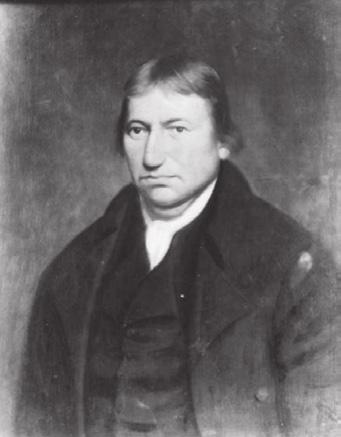
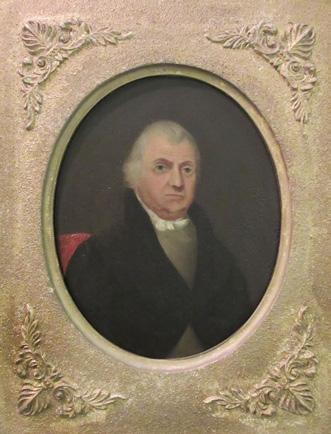
1765
John Archer, MD, the first medical school graduate in America, opens his own medical school in Bel Air, Maryland.
1799
The Medical & Chirurgical Faculty of the State of Maryland is chartered on January 20, 1799, in Annapolis. Upton Scott, MD, is the first President.
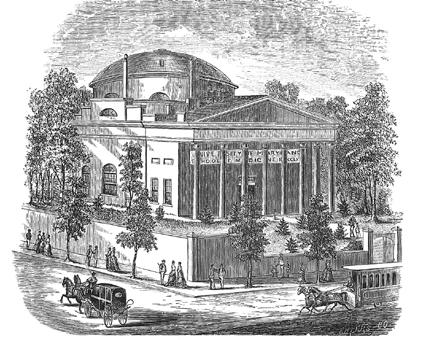
1807
The Medical & Chirurgical Faculty establishes the College of Medicine, which later becomes the University of Maryland School of Medicine.
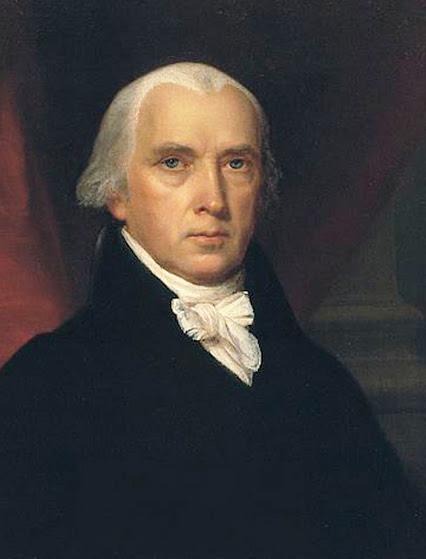
1814
William Beanes, MD, is rescued by Francis Scott Key, who then writes The StarSpangled Banner.
1830
The “Faculty” establishes a medical library which is open to all members for $1 a year.

1837
Horace Hayden, MD, opens the first dental school in America, which became the University of Maryland Dental School.
1848
The first AMA Convention is held in Baltimore at the invitation of the Faculty.
1877
The bi-weekly Maryland Medical Journal begins publication, and continues until 1918.
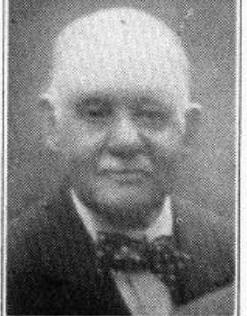
1882
The first Black and women members are admitted as members of the Faculty.
1885
By-laws of the Medical & Chirurgical Faculty are changed from “gentlemen” to “persons,” thereby opening wider admission to Blacks and women.
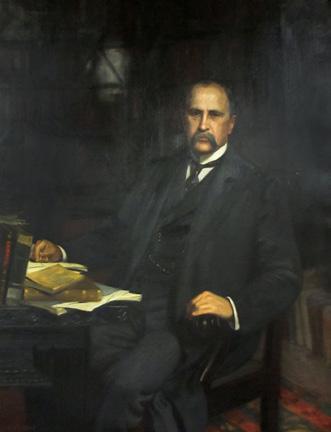
1889
William Osler, MD, comes to Baltimore and is the first Chief of Medicine at the newly-opened Johns Hopkins Medical School.

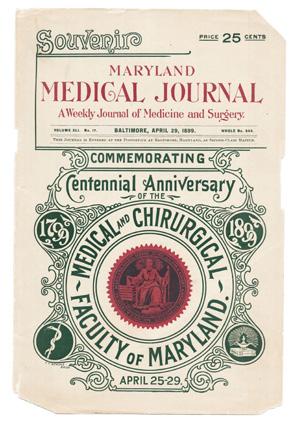
1896
Marcia Crocker Noyes is appointed at the Librarian by Dr. William Osler, President of the Faculty.
1899
The Faculty celebrates its first 100 years with the publication of “The Annals of Medicine in Maryland,” by Eugene Fauntleroy Cordell.
1900
The House of Delegates and County Medical Society structure is initiated.
1903
Under the new AMA rules, Marcia Crocker Noyes becomes the Executive Secretary of the Faculty.
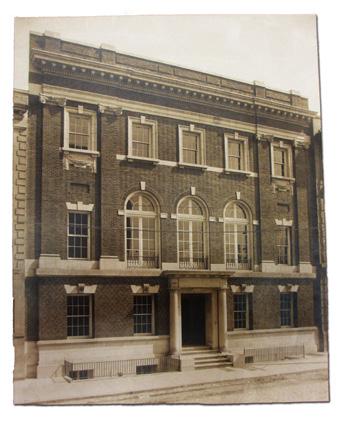
1909
The Faculty builds its own Headquarters building on Cathedral Street in Baltimore’s Mt. Vernon neighborhood.

1911
After the publication of the Flexner Report, the number of medical schools in Baltimore went from eleven to two. The College of Physicians & Surgeons, one of the larger schools, merged into the University of Maryland School of Medicine.
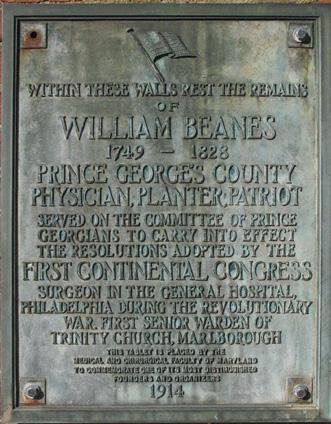
1914
On the 100th Anniversary of the writing of the National Anthem, a bronze plaque is placed on the grave of Dr. Wiliam Beanes.
1916
A medical regiment from Johns Hopkins goes to France to provide battlefield medical care during WWI


1919
Sir William Osler dies in Oxford, England. Memorial services are held across the world.
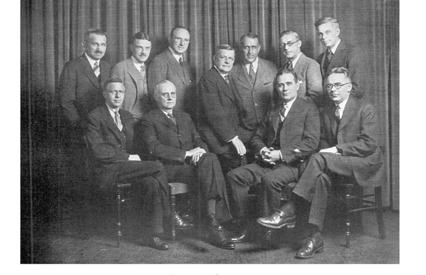
1930
The Library, now at nearly 55,000 volumes, celebrates its centennial.
1975
The MedChi Insurance Agency is founded by physicians for physicians.
1978
MedChi acquires 1205 Cathedral Street, the adjacent school building, from the City of Baltimore for the sum of $1.00.
1942
Dozens of physicians join the war effort in Europe, Africa, and Asia.
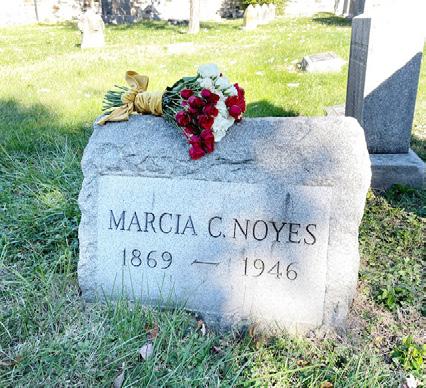
1948
1946
Marcia Crocker Noyes dies after faithfully working for the Faculty for exactly fifty years.
The first Executive Director is appointed and the membership tops 2,000.
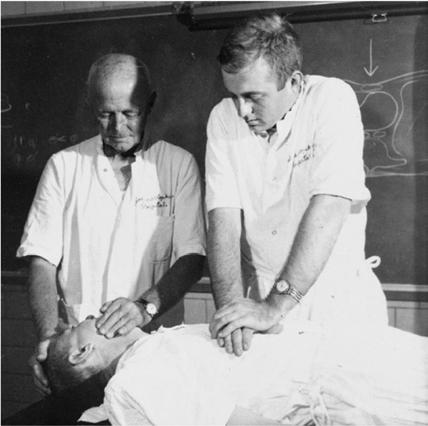
1963
CPR is introduced as a life-saving measure at the MedChi Summer Meeting in Ocean City, Maryland.

1983
Roland Smoot, MD, is elected as the first Black President of MedChi
1985
After extensive renovations, 1205 Cathedral Street is opened and becomes offices.
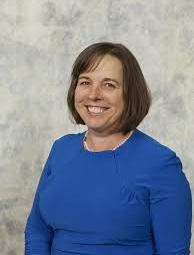
2002
Catherine Smoot-Haselnus, MD, is elected as the first Woman President of MedChi.

2024
The MedChi Museum of Maryland Medical History opens on the 225th anniversary of the first meeting of the 101 founders.
Noyes later acted as project manager for the construction of the building on Cathedral Street. She was constantly working to improve the building, making it a welcoming space for all. Included in the planning was a top-floor apartment for her to live with two Chow Chow dogs and her maid.
In the 1930s Noyes became President of the Medical Library Association and traveled the country, giving advice to medical libraries at hospitals and universities. She traveled back and forth to England and Europe to visit her friends, especially the Oslers. She frequently visited Montreal and McGill University, Osler’s alma mater. After Osler’s death, she would visit the home of his book collection. Noyes created the Osler Testimonial Fund, which is still in existence today.
In addition to her contributions to MedChi, Noyes was also active in the suffrage movement, which had frequent meetings — both pro and con — at the Faculty’s headquarters.
In her later years Noyes slowed down considerably, so the Faculty members planned to host a huge party celebrating the 50th anniversary of her employment. As physicians, Faculty
members were concerned she might not live until then, so they held the party in April of 1946.
Marcia Crocker Noyes died on November 24, 1946, just four days after the fiftieth anniversary of her employment at the Faculty. Her funeral was held there, with sixty physicians in attendance as pallbearers. She is buried at Green Mount Cemetery in Baltimore, along with her sister.
To those who knew her, Marcia Crocker Noyes was more than a librarian. She was someone who continuously advocated for others and inspired change. MedChi continues to honor the efforts of Marcia Crocker Noyes, giving the Medical Library Association’s highest award in her name.
Noyes’ legacy lives on through the library’s growing collection of medical books and journals. Even today, staff members claim to sense her presence in MedChi’s building, hearing sounds, noticing rearranged paintings, and finding objects mysteriously returned. One thing all can agree on is that Marcia Crocker Noyes made MedChi what it is today.
Meg Fairfax Fielding is the Director of the History of Maryland Medicine. She can be reached at mfielding@medchi.org.

Susan G. D’Antoni, FAAMSE
The first mention of a medical meeting in Montgomery County is recorded in the Maryland State Medical Journal in 1891. On December 11, 1903, a meeting of physicians of Montgomery County was held in Rockville for the purpose of organizing the Montgomery County Medical Society. Dr. Roger Brooke, VII, was elected president and soon after, on April 12, 1904, the Constitution was adopted and signed by its seventeen charter members. Dues were one dollar; raised in 1905 to three dollars. Held in the Spring and the Fall, meetings lasted all day.
Membership increased from seventeen charter members in 1903 to almost 1,000 in 1974, which reflected the rapid growth of Montgomery County. The first administrative offices were established in 1957, and a full-time Executive Secretary was employed.
Over the years, a for-profit subsidiary, the Medical Bureau and Exchange, was established providing telephone and exchange services for more than 400 physicians with five switchboards.
After the Medicare program was initiated with some coverage for extended care facilities, the Medical Society received a contract from the Public Health Service to assure “that the patient was being cared for at the appropriate level of care, to assure that the patient moved from one level of care to another smoothly and appropriately, and to help upgrade quality of medical care in extended care facilities and ultimately in all nursing homes in the county.” The Medical Society was engaged in pre-certification of Medicare patients in skilled nursing facilities, training of nursing home personnel, and developed a Patient Advocate Referral Service in the early 1970s.
state and local legislation, problems of drug abuse, emergency medicine, and review of a plan for expansion of hospitals.
This history, contained in MCMS’ records (author unknown), provides insight into the first seventy years of the Medical Society. As the saying goes, “the more things change, the more they stay the same.”
The newly revised mission statement of Montgomery County Medical Society is “Montgomery County Medical Society unites, strengthens, and advocates for our physician community through education, collegiality and service, and encourages sharing of best practices to promote equitable, high quality, accessible healthcare.” This statement demonstrates our continuing commitment to physicians and our community which is unchanged since our founding.
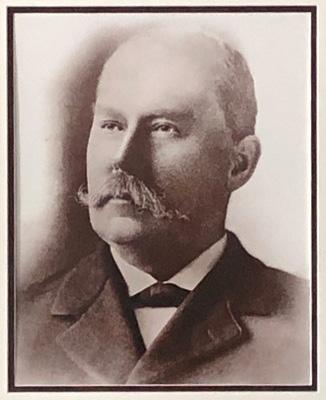
MCMS is still involved in quality patient care issues including the concerns raised by our physicians about the quality of inpatient care and ER wait times. Moreover, MCMS recognizes the value of access to care and just launched a workforce survey to learn how significant the issues are — both in primary care and specialty care access.
MCMS commitment to advocacy for physicians and patients continues and remains a top priority. The focus of our advocacy efforts, however, has changed with more time and resources being directed to scope of practice battles, tort reform challenges, enhancing the Medicaid budget to improve access, and reforming insurance company practices to ensure access.
The Society developed the “Blue Letter” written in English and Spanish which outlined how to find medical care, the importance of having a family doctor, and how care was paid for. It was distributed to more than 40,000 people.
The Medical Society was incorporated in 1972 to “strive for access, high quality and reasonable cost of medical care in the community.” The Medical Society was involved in immunization access, school health, child abuse, mental health,
The Medical Society has always stepped up to help physicians and patients through dire situations, including, most recently, COVID-19. From facilitating vaccinations for physicians to distributing best infection control practices and PPE, Montgomery County Medical Society has been a stalwart partner and advocate to get through the most challenging times.
The first seventy years of MCMS’ history saw the Medical Society be involved with Medicare. In the last forty to forty-five
continued on page 20
MCMS Mission Is Unchanged, continued from pg. 19
years, since the advent and growth of third-party insurance and managed care in the 1980s and beyond, MCMS and MedChi have had to advocate more actively for needed reforms which have often interfered with the patient-physician relationship.
It would be interesting to know what Dr. Brooke, MCMS’ first president, would think about these intrusions and poor payments of third-party insurance making Maryland the 49th worst state in this regard. It would not surprise me if he were rolling over in his grave. He would be shocked by how much of the Society’s resources (and MedChi’s) are committed to helping members deal with the frustrations brought on by insurance companies and the processes they put in place to manage “cost” not “care.”
Back in the early decades of MCMS it’s fair to suggest that physicians knew each other. Society meetings were THE place for learning. Physicians were collegial, shared patient cases and medical staff involvement. Today, since fewer physicians go to the hospital, MCMS works to get physicians out of their silos to meet each other as a means of developing referral sources and commiserating, offers in-person and virtual education, and provides support and assistance to practice staff to navigate the challenges their practices face.
Dues have obviously increased commensurate with the infrastructure required to serve the profession. Communication media are more plentiful yet it’s still a challenge to communicate our value. And practicing medicine is much more complicated than in 1903. While we all benefit from the patient care technological advances, physicians long for a time when they didn’t incur such significant medical education debt and provided services to patients without intrusion of government or third-party payors and received a chicken or fresh vegetables for payment from a grateful patient.
Through all the change, one thing remains the same. Montgomery County Medical Society remains committed to serving our physician members, medical community, and the public, and strives to be a relevant partner and advocate for equitable, high quality, accessible healthcare.
Susan G. D’Antoni, FAAMSE is the CEO of Montgomery County Medical Society. She can be reached at sdantoni@ montgomerymedicine.org.
Baltimore City Medical Society (BCMS) relocated its offices to the MedChi Building in 2001, moving into the third-floor suite that houses part of the former MedChi Library offices and the Dr. Aaron Friedenwald Room, named in honor of the celebrated family of physicians, including 1904 BCMS president, Harry Friedenwald, MD. In addition to this milestone, 2024 also marks the 120th Anniversary for BCMS as a component of MedChi. We celebrate these BCMS milestones!

1788 Charles Wiesenthal, MD (pictured), President of first BCMS organization
1904 Harry J. Friedenwald, MD, President of BCMS, a MedChi component
1949 Black physicians granted full membership in BCMS
1969 Bernadette H. Lane, first chief executive
1972 BCMS Foundation established to provide community education and charitable outreach
1980 BCMS commissioned two-year study to improve availability and access to medical care
2004 100th Anniversary-commissioned History of BCMS, by Ron Pilling
2009 Alex Angelidis, first BCMS pre-med intern, now a practicing physician
2013 Sponsored Resolution requesting the AMA seek nationwide removal of tobacco products from pharmacy shelves (Note: CVS soon thereafter removed tobacco products from their shelves.)
2014 Sponsored Resolution seeking legislation to ban non-compete clauses in physician contracts (Note: Maryland Legislature passed law in 2024 banning noncompetes)
2023 Hosted first annual symposium, “Physicians Leading Physicians to Financial Independence”
Cheers to MedChi, BCMS, and all MedChi components. Milestones matter; let’s celebrate them all!
It was a sold-out Members’ Social event at Camden Yards on August 23, as Anthony Santander hit a grand slam off Bryan Abreu in the eighth inning, taking the Baltimore Orioles to a 7–5 comeback victory over the Houston Astros.

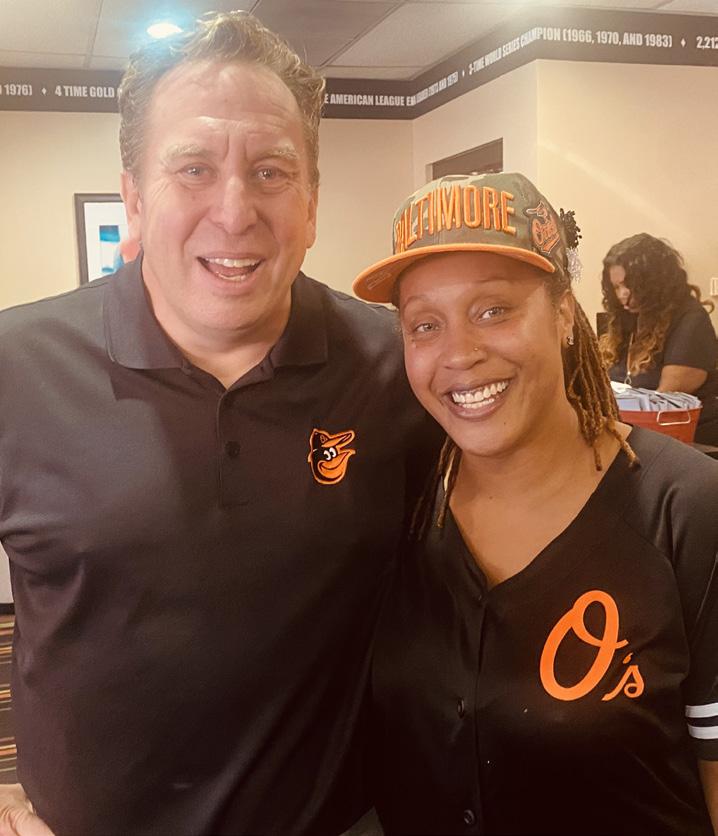


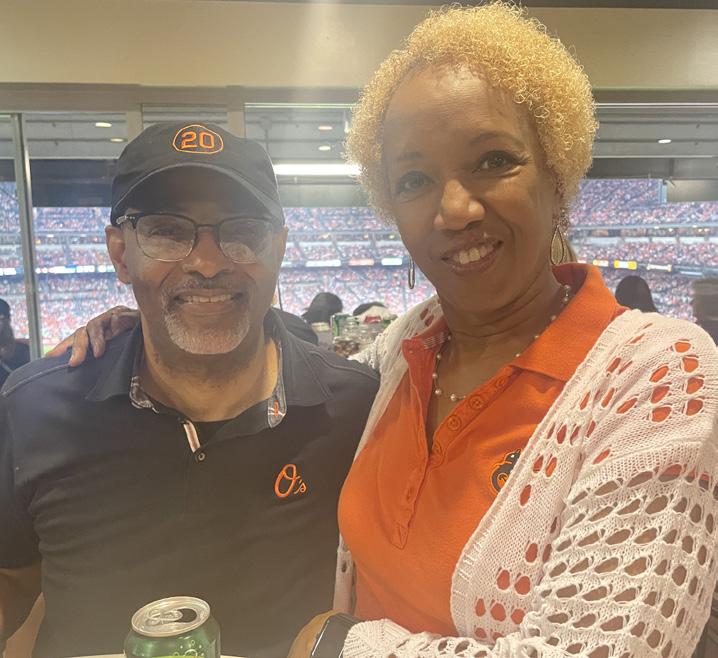

MedChi’s 225th Charity Golf Scramble was a resounding success. Guests enjoyed a gorgeous day on the links at Renditions Golf Club on September 9. Proceeds from the event will benefit The Center for a Healthy Maryland.


MedChi welcomes the following new members, who joined between August 19, 2024, and October 2, 2024.
Isaac Acquah, MD, MPH — Medstar Baltimore Internal Med Residency Program
Emily Adams, MD — JHU OB/GYN Residency Program
Akwasi O. Aduboffour, MD
Ore Afon, MD — JHU OB/GYN Residency Program
Gifty Agyemang, MD — JHU Anesthesiology & Critical Care Residency
Leora Aizman, MD — JHU Dermatology Residency
Elie W. Akl, MD
Joel Manuel Alejandro, MD
Saher Ali, MD — JHU Anesthesiology & Critical Care Residency
Tessa Alianell, MD — JHU Emergency Medicine Residency Program
Sahitya Allam, MD
Chinwendu Amazu, MD, PhD — JHU Anesthesiology & Critical Care Residency
Lara Ambrosi, MD — JHU Emergency Medicine Residency Program
Kelvin Ampem-Darko, MD — JHU Anesthesiology & Critical Care Residency
Shannon Anderson, MD
Rabiah Aslam Ansari, MBBS
Kody Armann, MD — JHU Anesthesiology & Critical Care Residency
Puthitra Arpornsuksant, MD — JHU Anesthesiology & Critical Care Residency
Caroline Ayinon, MD — JHU OB/GYN Residency Program
Daniel Ayorinde, MD — JHU Emergency Medicine Residency Program
Jamal Bajaw, DO, MD — JHU Anesthesiology & Critical Care Residency
Jessica Barnes, MD — JHU Anesthesiology & Critical Care Residency
Brandon Barrett, MD — JHU Anesthesiology & Critical Care Residency
Colette A.B. Baugham, MD — JHU Emergency Medicine Residency Program
Moodakare Bhat, MBBS — JHU Anesthesiology & Critical Care Residency
Edward J Bieber, MD — OrthoBethesda
Alan Blayney, MD — JHU Anesthesiology & Critical Care Residency
Jacob Blum, MD — JHU Anesthesiology & Critical Care Residency
Pegah Blusteini, MD — JHU OB/GYN Residency Program
Janet Bonin, MD — JHU Anesthesiology & Critical Care Residency
Joon Boon, MD, PhD — JHU Anesthesiology & Critical Care Residency
Daniel Bowman, DO — JHU Anesthesiology & Critical Care Residency
Jace Bradhaw, MD — JHU Anesthesiology & Critical Care Residency
Molly Brady, MD — JHU Emergency Medicine Residency Program
Laresa Breden, MD — JHU OB/GYN Residency Program
Jesper Brickley, DO
Emily Burson, MD — JHU Anesthesiology & Critical Care Residency
Steven Carlisle, MD — JHU OB/GYN Residency Program
Zining Chen, MD — JHU Anesthesiology & Critical Care Residency
Andrea Chernau, DO — JHU Anesthesiology & Critical Care Residency
Justin Choi, MD — JHU Dermatology Residency
Courtney Connolly, MD — JHU OB/GYN Residency Program
Nicholas Corcoran, DO — JHU Anesthesiology & Critical Care Residency
Julencia Curtis, MD, MS — JHU Emergency Medicine Residency Program
Jaclyn Daignault, MD — JHU Dermatology Residency
Devin Daniels, DO — JHU Anesthesiology & Critical Care Residency
Priya Dohlman
Austin Drewek, MD — JHU Emergency Medicine Residency Program
Blake Duffy, MD — JHU Anesthesiology & Critical Care Residency
Omar Duhly, MD — JHU Anesthesiology & Critical Care Residency
Richard Duong, DO — JHU Anesthesiology & Critical Care Residency
Ista Egbeto, MD — JHU Dermatology Residency
Angelica Ezeigwe, MD — JHU Anesthesiology & Critical Care Residency
Haleigh Ferro, MD — JHU Emergency Medicine Residency Program
Elizabeth Fitzsousa, MD — JHU Emergency Medicine Residency Program
Hannah Fuher, MD — JHU Emergency Medicine Residency Program
Laura Fuhr, MD — JHU OB/GYN Residency Program
Lauren Gard, MD, MPH — JHU Emergency Medicine Residency Program
Michael A. Gardyn, DO — Baltimore Pain Management Center, PA
Ursula Gately
Asmita Gathoo, MD — JHU OB/GYN Residency Program
Melvin R. Gonzaga, MD — Gonzaga Health
Rosario B. Gonzaga, MD — Gonzaga Health
Rommel Borromeo Gonzaga, MD — Gonzaga Health
Haley Gorie, MD — JHU Anesthesiology & Critical Care Residency
Adrianna Gorniack, MD — JHU OB/GYN Residency Program
Jasmin Gosen, MD — JHU Emergency Medicine Residency Program
Chastity Greene, MD — JHU Emergency Medicine Residency Program
Arthur Gribensk, MD — JHU Anesthesiology & Critical Care Residency
Darin Griner, MD — JHU Anesthesiology & Critical Care Residency
Stephanie McKenney Groff, DO — Poolesville Family Practice
Sarah Grosser, MD, MS — JHU Emergency Medicine Residency Program
Alshaday Gudina, MD — JHU Anesthesiology & Critical Care Residency
Sott Gummerson, MD, MS — JHU Emergency Medicine Residency Program
Paul Hahn, MD — JHU Emergency Medicine Residency Program
Riley Hales, MD — JHU Anesthesiology & Critical Care Residency
Andrew Han, MD — JHU Anesthesiology & Critical Care Residency
Colleen Hanlon, MD — JHU Anesthesiology & Critical Care Residency
Andrea Harris, MD — JHU Emergency Medicine Residency Program
Robert Hawthorne, MD — JHU Anesthesiology & Critical Care Residency
Sarah Hill-Yeterian, MD — JHU Emergency Medicine Residency Program
Justin Holbrook, MD — JHU Anesthesiology & Critical Care Residency
Alex Huttleston, MD — JHU Emergency Medicine Residency Program
Kayla Iuliucci, MD — JHU Emergency Medicine Residency Program
Rachel Jackson, MD — JHU Emergency Medicine Residency Program
Mark Jackson, MD — JHU Anesthesiology & Critical Care Residency
Anna Jarvis, MD — JHU OB/GYN Residency Program
Patty Jones
Gabrielle Jude, MD — JHU OB/GYN Residency Program
Deepika Khanna, MD — JHU OB/GYN Residency Program
Jake D Kim — University of Maryland School of Medicine
Ryan King, MD — JHU OB/GYN Residency Program
Alissa Klammer, MD — JHU Emergency Medicine Residency Program
Matthew Kosasih, MD — JHU Anesthesiology & Critical Care Residency
Emil Kurian, MD — JHU Anesthesiology & Critical Care Residency
Harry Lambert , MD, MPH — JHU Emergency Medicine Residency Program
Emily Larkin, MD — JHU Anesthesiology & Critical Care Residency

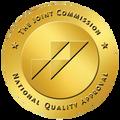


Katherine Lee, MD — JHU Anesthesiology & Critical Care Residency
Kookjae Lee, MD — JHU Anesthesiology & Critical Care Residency
Connor Lentz, MD — JHU Anesthesiology & Critical Care Residency
Justine Lewis, MD — JHU Anesthesiology & Critical Care Residency
Christine Penelope Lewis, MD
Josephine LoBello, MD — JHU Emergency Medicine Residency Program
Shay Lung, MD — JHU Anesthesiology & Critical Care Residency
Mary Ma, MD
Nelson Malone, MD — JHU Emergency Medicine Residency Program
Audrey McMurtrie, MD — JHU Emergency Medicine Residency Program
Kevin Mortazavi, MD — JHU Emergency Medicine Residency Program
Alexis Motz, MD — JHU Anesthesiology & Critical Care Residency
Lea Moujaes, MD — JHU Emergency Medicine Residency Program
Imelda Muller, MD — JHU Anesthesiology & Critical Care Residency
Kelsey Mumford, MD — JHU OB/GYN Residency Program
Lucy Murray, MD — JHU Anesthesiology & Critical Care Residency
Victoria Murray
Sudeep Mutyala, MD — JHU Anesthesiology & Critical Care Residency
Emily Nagourney, MD — JHU Anesthesiology & Critical Care Residency
Roxanna Nahvi, MD — JHU Bayview Internal Medicine Residency Program
Breanna Nguyen, MD — JHU Dermatology Residency
Taylor Nuse, MD — JHU Emergency Medicine Residency Program
Amy Nwankwo
Karla Objio, MD — JHU Anesthesiology & Critical Care Residency
Audrey Ogendi, MD, MPH — JHU Emergency Medicine Residency Program
Ryan Okanski, MD — JHU Anesthesiology & Critical Care Residency
Sydney Olson, MD — JHU OB/GYN Residency Program
Titilola Oluwasola, MD
Genevieve Palmer, DO — JHU Emergency Medicine Residency Program
Samip Patel, MD — JHU Anesthesiology & Critical Care Residency
Jenna Paul-Shultz, MD — JHU Emergency Medicine Residency Program
Denisa Pavlickova, MD — JHU Anesthesiology & Critical Care Residency
Elizabeth Pham, MD — JHU Anesthesiology & Critical Care Residency
Tasha Phillips-Wilson, MD
Callie Pina, MD — JHU Emergency Medicine Residency Program
Kelly Poe, MD — JHU Anesthesiology & Critical Care Residency
Karishma Popli, MD
Arunsrinivasin Punshunmugum, MD — JHU Emergency Medicine Residency Program
Luxi Qiao, MD — JHU Emergency Medicine Residency Program
Connie Qiu, MD — JHU Dermatology Residency
Parker Ragle, MD — JHU Emergency Medicine Residency Program
Michael Razavi, MD — JHU Anesthesiology & Critical Care Residency
Claire Rhee, MD — JHU Anesthesiology & Critical Care Residency
Christopher Riis, DO — JHU Anesthesiology & Critical Care Residency
Darnell Robbin, MD — JHU Anesthesiology & Critical Care Residency
Michelle Robinson, MD — JHU Dermatology Residency
Bliss Rogers, MD — JHU Emergency Medicine Residency Program
Chelsea Rogers , MD — JHU Anesthesiology & Critical Care Residency
Sophie Roh, MD — JHU Dermatology Residency
Kwame Romero-Sackey, MD — JHU Anesthesiology & Critical Care Residency
Mel Rosen, MD — JHU OB/GYN Residency Program
Cory Roth, MD — JHU Anesthesiology & Critical Care Residency
Ghassan Bou Saba, MD — JHU Emergency Medicine Residency Program
Gobindveer Singh Sahi, MD — Siekanowicz & Gowda, PLLC Ortho Sports Doctors
Autumn Saizan, MD — JHU Dermatology Residency
Kara Schradle , MD — JHU Emergency Medicine Residency Program
Darreon K. Schwartz, MD — JHU Anesthesiology & Critical Care Residency
Unique Shakoor, MD — JHU Anesthesiology & Critical Care Residency
Jeremy Sieker , MD — JHU Anesthesiology & Critical Care Residency
Varsha Simha, MD — JHU Dermatology Residency
Luaren Smith , MD — JHU Anesthesiology & Critical Care Residency
Iman Soliman, MD — JHU Anesthesiology & Critical Care Residency
Austin Songer, MD — JHU Anesthesiology & Critical Care Residency
James Sowers, MD, PhD — JHU Anesthesiology & Critical Care Residency
Vinay Srinivasan, MD, MPH — JHU Emergency Medicine Residency Program
Emily Stock, MD — JHU OB/GYN Residency Program
Noah Suanders, MD — JHU Anesthesiology & Critical Care Residency
Simone Sukhdeo, MD, PhD — JHU Anesthesiology & Critical Care Residency
Brandon Sumida, MD — JHU Anesthesiology & Critical Care Residency
Sai Talluru, MD — JHU Dermatology Residency
Joshua Taubman, MD — JHU Emergency Medicine Residency Program
Elena Taylor
Benjamin M. Todd, MD — JHU Anesthesiology & Critical Care Residency
Lizzie Torrez, MD — JHU OB/GYN Residency Program
Amaka J. Undie, MD — Bethany Pediatrics
Lucy B. VanVoorhees, MD
Jaun Pablo Vazquez, MD — JHU Bayview Internal Medicine Residency Program
Melinique Walls, MD — JHU OB/GYN Residency Program
Jeffrey Wang, MD, PhD — JHU Anesthesiology & Critical Care Residency
Mackenzie Warchol, DO — JHU Anesthesiology & Critical Care Residency
Christine Wei, MD — JHU Emergency Medicine Residency Program
David Weiner, MD — JHU Dermatology Residency
Christopher Wend, MD — JHU Emergency Medicine Residency Program
Marcie O Wertlieb, MD — Laurel Eye Physicians
Logan Williams , MD — JHU Anesthesiology & Critical Care Residency
Christian Wood, MD — JHU Emergency Medicine Residency Program
Suzanne Xu, MD — JHU Dermatology Residency
Dorothy Yim , MD — JHU Emergency Medicine Residency Program
Jenny Yoon, MD — JHU Anesthesiology & Critical Care Residency


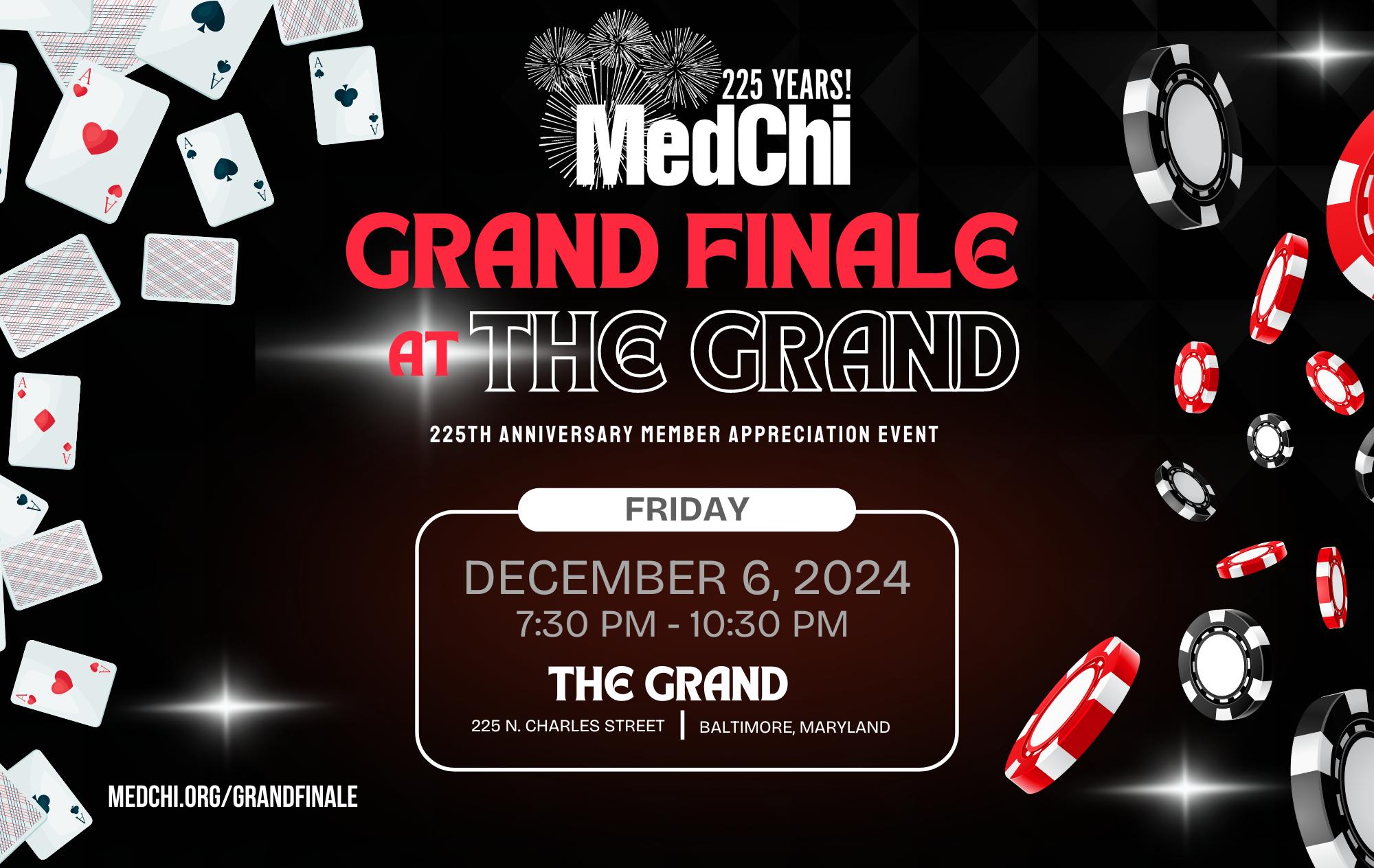
A complete list of MedChi and component events can be found at: http://www.medchi.org/Calendar-of-Events
4: AMA Delegation Meeting
6: Washington County Medical Society Meeting
6: Maryland Neurological Society Fall Business Meeting
6: Baltimore County Medical Association CME Event
13: Baltimore County Medical Association Board Meeting
14: Baltimore City Medical Society Board Meeting
14: Montgomery County Medical Society Membership Meeting
18: Council on Communications Meeting
19: Baltimore City Medical Society Foundation’s Annual Furlong Memorial Lecture
19: Opioid Pain & Addiction Committee Meeting
21: MedChi Board of Trustees Meeting
6: Baltimore County Medical Association Legislative Breakfast
6: 225th Anniversary Grand Finale Event
15: Baltimore County Medical Association Holiday Brunch
17: MedChi Finance Committee Meeting

